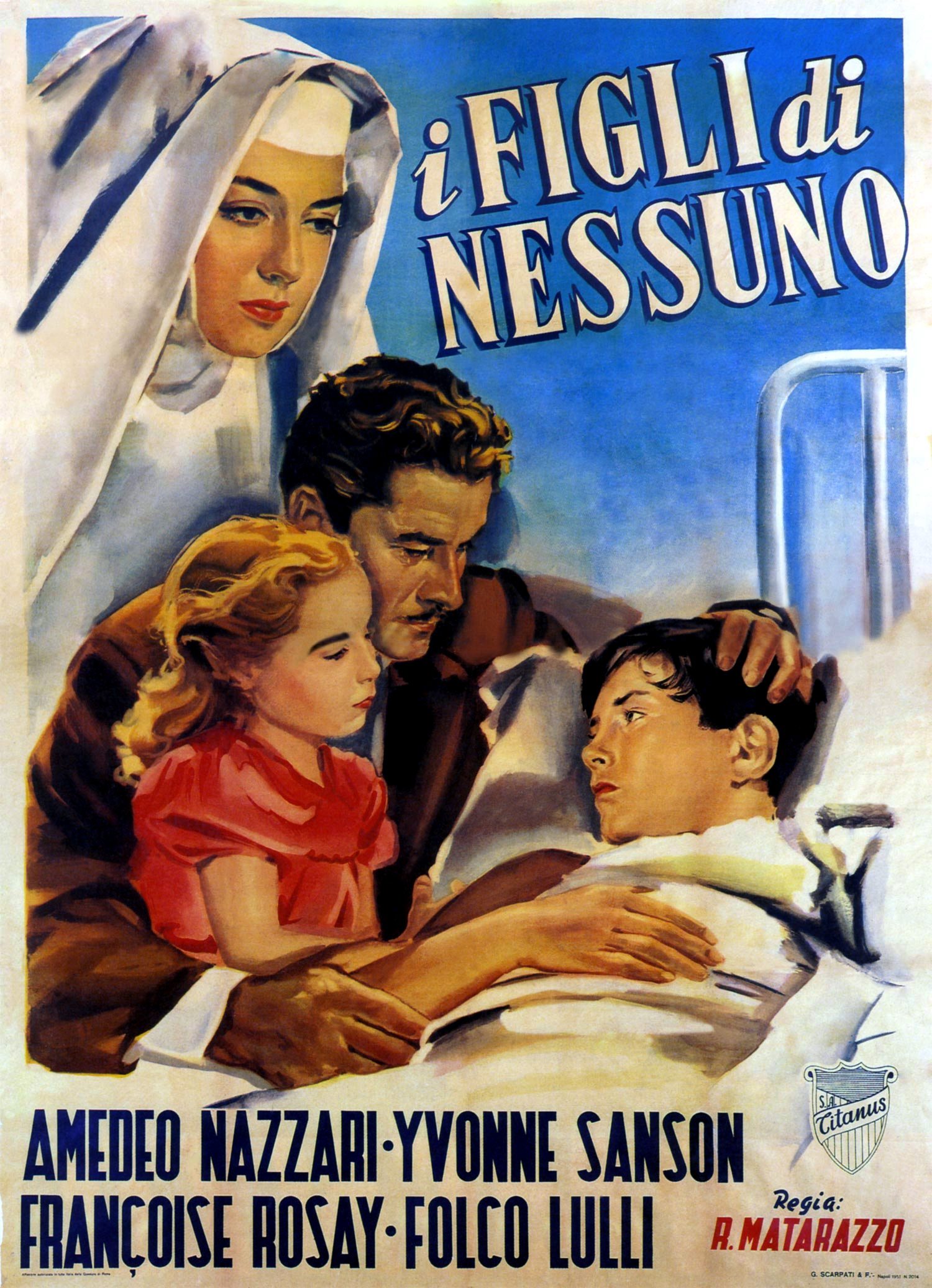Another masterpiece of melodramatic cinema from Matarazzo, who has few rivals in world cinema
The third chapter in the story of Amedeo Nazzari & Yvonne Sanson, the couple that touched the hearts of millions and continues to delight film lovers everywhere
Raffaele Matarazzo reunites Amedeo Nazzari and Yvonne Sanson for a third time, in a film based on a screenplay that had twice already been adapted for the cinema by Titanus, in 1921 and 1943. The result is another hugely successful triumph and a masterpiece of popular cinema. The highly respected French critic Jacques Lourcelles summarised the film’s greatness in the following way: “We are witnessing the extraordinary symphonic and lyrical amplification of the themes and situations found throughout this series of films. Contrary to the condensed drama of Catene, in Figli di nessuno time plays an important role; a profusion of events and incidents serve to nourish the increasingly melodramatic power of the story, making the film genuinely feel like a novel. Nature also plays a very importance role, with the mountains and quarries of Carrara acting as a theatre for the drama, and in so doing reasserting its tragic dimension. Matarazzo’s serene and clear style is entirely free of the baroque.”
Count Guido, the owner of a marble quarry in Carrara, is in love with Luisa, the daughter of one of his employees. However his mother, the countess, considers Luisa unsuitable and secretly hatches a sinister plot with the complicity of the cruel Anselmo, successfully managing to keep her son away from the woman. Luisa disappears and everyone thinks she has committed suicide. Instead, she has given birth to a son, Bruno, and become a nun. Bruno is raised in the countess’s house. His father, ignorant of the fact that he has a son, subsequently remarries. Everything comes to the boil inside the quarry when the count realises that Bruno is his son. Bruno, for his part, gets into a fight with Anselmo and is fatally wounded in an explosion. On his deathbed, he will finally be reunited with his mother.
Another masterpiece of melodramatic cinema from Matarazzo, who has few rivals in world cinema
The third chapter in the story of Amedeo Nazzari & Yvonne Sanson, the couple that touched the hearts of millions and continues to delight film lovers everywhere
Raffaele Matarazzo reunites Amedeo Nazzari and Yvonne Sanson for a third time, in a film based on a screenplay that had twice already been adapted for the cinema by Titanus, in 1921 and 1943. The result is another hugely successful triumph and a masterpiece of popular cinema. The highly respected French critic Jacques Lourcelles summarised the film’s greatness in the following way: “We are witnessing the extraordinary symphonic and lyrical amplification of the themes and situations found throughout this series of films. Contrary to the condensed drama of Catene, in Figli di nessuno time plays an important role; a profusion of events and incidents serve to nourish the increasingly melodramatic power of the story, making the film genuinely feel like a novel. Nature also plays a very importance role, with the mountains and quarries of Carrara acting as a theatre for the drama, and in so doing reasserting its tragic dimension. Matarazzo’s serene and clear style is entirely free of the baroque.”
Count Guido, the owner of a marble quarry in Carrara, is in love with Luisa, the daughter of one of his employees. However his mother, the countess, considers Luisa unsuitable and secretly hatches a sinister plot with the complicity of the cruel Anselmo, successfully managing to keep her son away from the woman. Luisa disappears and everyone thinks she has committed suicide. Instead, she has given birth to a son, Bruno, and become a nun. Bruno is raised in the countess’s house. His father, ignorant of the fact that he has a son, subsequently remarries. Everything comes to the boil inside the quarry when the count realises that Bruno is his son. Bruno, for his part, gets into a fight with Anselmo and is fatally wounded in an explosion. On his deathbed, he will finally be reunited with his mother.
